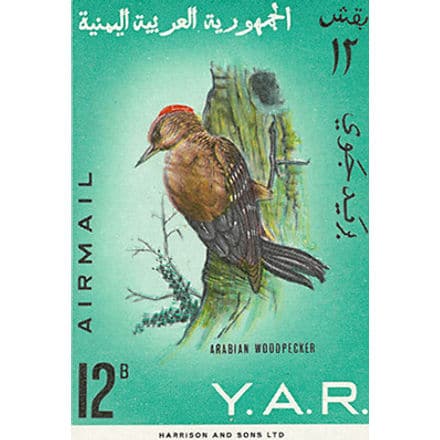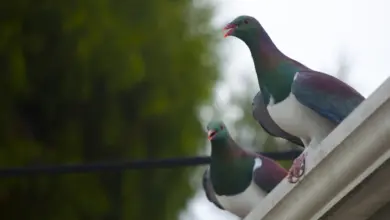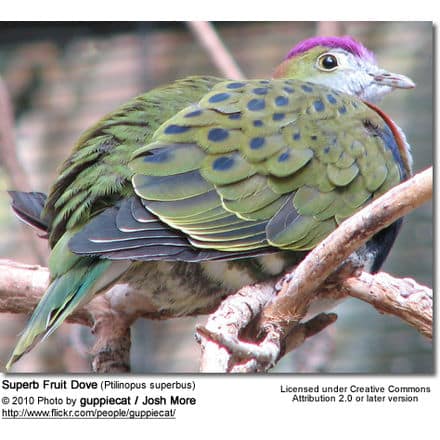Hummingbirds found in Illinois, USA
Hummingbirds found in the USA (by U.S. State) … Canada … Mexico … Puerto Rico … Jamaica … Honduras
Hummingbird Information … Hummingbird Species Photo Gallery
The following hummingbird species are known to occur in Illinois.
Ruby-throated Hummingbirds, Archilochus colubris – Native Breeders … Generally arrive in April and are usually gone after the end of September. Males are usually the ones to arrive first to stake out their feeding territories, and to depart first. Females and juveniles follow about two weeks later.
The male has a ruby-red throat, a white collar, an emerald green back and a forked tail.
The female has a green back and tail feathers that are banded white, black and grey-green.
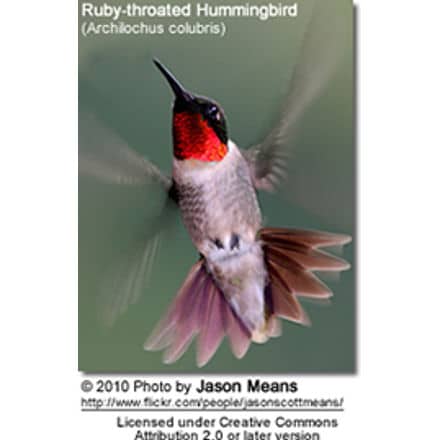
Rufous Hummingbirds, Selasphorus rufus – Casual Vagrants
These hummingbirds are usually found in gardens and at feeders. These birds are fearless, and are known for chasing away other hummingbirds and even larger birds, or rodents away from their favorite nectar feeders and flowers.
Males can easily be identified by their glossy orange-red throats.
Females have whitish, speckled throats, green backs and crowns, and rufous, white-tipped tail feathers.
Rufous Hummingbird versus the similar Ruby-throated Hummingbird (Identification)
Allen’s Hummingbirds, Selasphorus sasin – Rare vagrants – The Allen’s Hummingbird is often confused with the Rufous Hummingbird, but the Allen’s can be identified by the green back whereas the Rufous Hummingbird has a coppery back.
The male has a throat that ranges in color from orange-red to yellow-orange, a back that is bright green, a rump that is rufous and its tail feathers are rufous tipped in black.
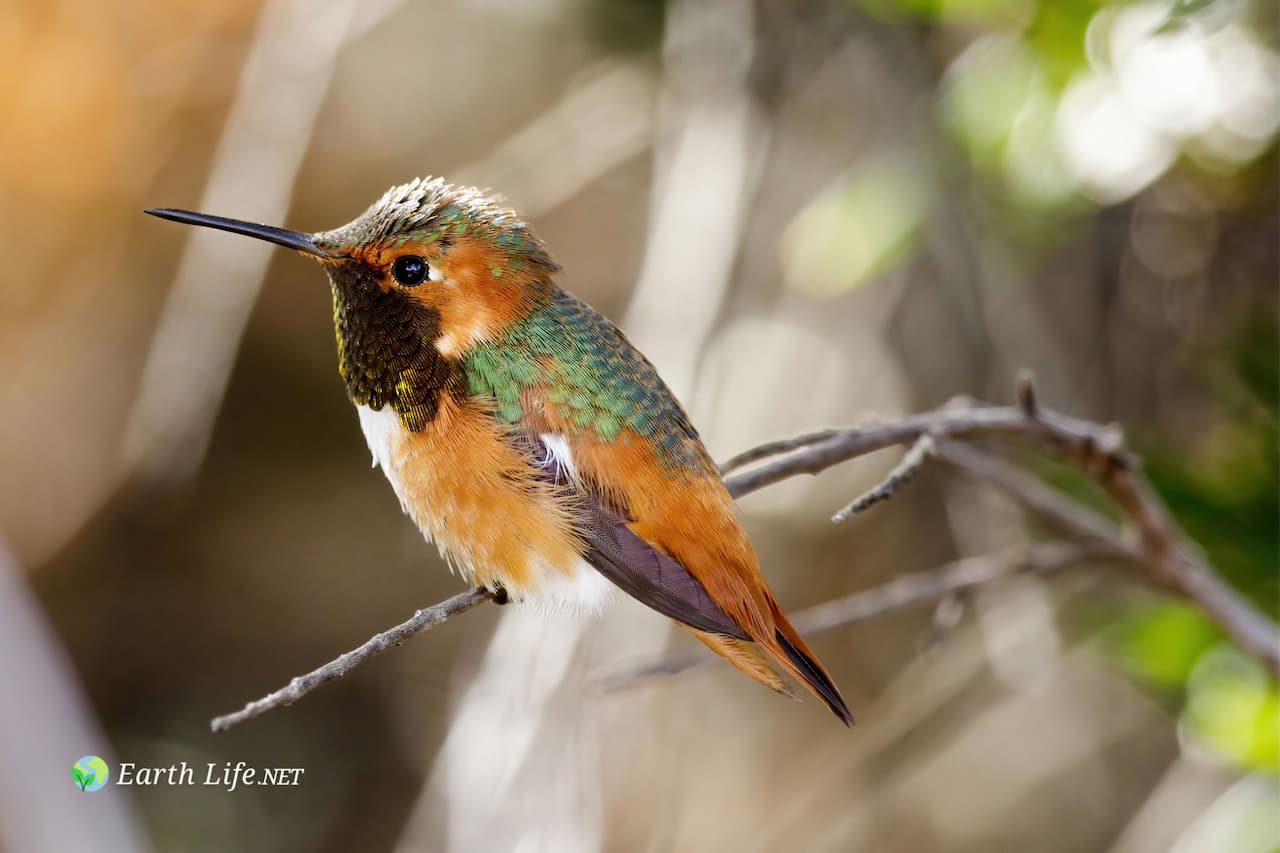
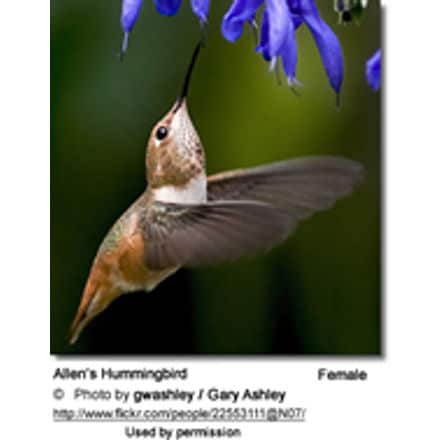
Broad-billed Hummingbirds (Cynanthus latirostris) – Accidental / Vagrants – These mostly Mexican hummingbirds venture into the United States regularly; they mostly visit the southern parts – but a few vagrants travel as far north as Wisconsin. Most likely occurrence would be between July and December near hummingbird bird feeders.
The male is glossy green above and on the chest. He has a deep blue throat. His straight and slender beak is red with a black tip. His slightly forked tail is dark above, and the under tail feathers are white.
The female is less colorful than the male. Her throat, chest and belly are light to medium grey. She has a white stripe over each eye.
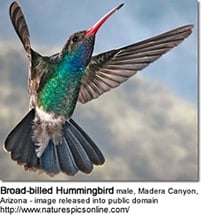

Black-chinned Hummingbirds are rare visitors in this state.
Lombard, IL: Kevin Dafler photographed a black chinned hummingbird at their feeder on Aug 17th, 2014.
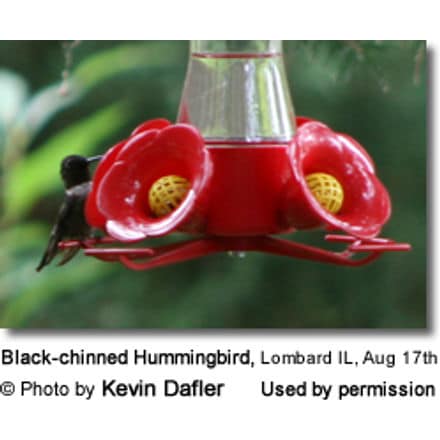
One Black-chinned Hummingbird has been reported by Terri Hatfill
Peoria, IL in 2013 (regular visitor to bird feeder).
One male Black-chinned Hummer – reported by Kathy Haa to have visited her Lantana plant in Oswego, Illinois several times on 8/10/2013. She described this Black-Chinned Hummingbird as appearing healthy with a beautiful plumage.
It appears that the Black-chinned hummingbirds are expanding their territories into Illinois.
If you see a hummingbird that doesn’t appear to be any of the above, please e-mail comments / images to: [email protected]. Thanks!
The favorite feeding plants for Hummingbirds in Illinois are:
Many hummingbirds favor red blossoms with a tubular shape (but some species prefer other colors). Hummingbirds feed readily on pink, blue, orange, peach and purple flowers.
- Anise Sage (Salvia guaranitica) – Blue flowers. One of hummingbird favorites. Also: Salvia pensetmonoides
- Hummingbird Mints — (Agastache cana and Agastache rupestris / Agastache ‘Acupulco Salmon and Pink’ ) – Perennial; grows quickly; very fragrant.
- Royal catchfly (silene regia)
- Flowering Maple (Abutilon sp.) – Not cold resistant. Only survives the winter if brought indoors. A prolific bloomer with lots of nectar. A favorite feeding plant.
- Trumpet honeysuckle (Lonicera sempervirens)
- Texas Sage (Salvia coccinea), Salvia ‘Maraschino’ (Bush Salvia)
- Red Hot Poker (Tritoma)
- Bee Balm (Monarda)
- Penstemon barbatus
- Crocosmia ‘Lucifer’

